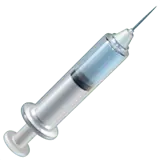Lace bugs


CLASSIFICATION
Animalia, Insecta, Hemiptera, Tingidae
ABOUT
Lace bug is a pest typically feeding on azaleas and other flowering plants causing yellow and white stippling on the leaves, leaf drop, and curling.
How to treat?
 Biological
BiologicalRemove pests mechanically. Use a strong stream of water to remove the insect.
Apply ecological products for plant protection (e.g. horticultural oil, neem oil, insecticidal soap).
Introduce natural enemies - predators, parasites, or diseases (e.g. parasitic wasp Diglyphus isaea, bacterium Bacillus thurigiensis, beneficial nematodes).
 Chemical
ChemicalIf necessary, apply insecticide containing imidacloprid (GHS07: Harmful, GHS08: Health hazard).
If necessary, apply insecticide containing carbaryl (GHS07: Harmful, GHS08: Health hazard, GHS09: Environmental hazard).
If necessary, apply insecticide containing pyrethrin (GHS07: Harmful, GHS09: Environmental hazard).
 Disease prevention
Disease preventionAvoid dry soil and full sun which make the plant more susceptible to infection.
Choose suitable neighboring plants. Plant a wide variety of species to avoid the infection from spreading - lace bugs feed usually on one plant species.